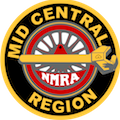I have been in the train hobby for over fifty years. One of the things that has always fascinated me are signals-both prototype and model. I was always looking for a way to put signals on my Cincinnati Central-especially since it is supposed to depict a heavy-duty mainline coal carrier. I also wanted to do it without breaking the bank!
Some years ago the Chesapeake and Ohio Historical Society began selling C&O style cantilever signals by Oregon Rail Supply. I dutifully put one together and placed it on the layout-but being unfamiliar with LED’s I used bulbs. Over a period of time I purchased signal bridges by Bachman and H4C. Each was modified to fit specific locations and I continued using bulbs. I was never happy with the inconsistent brightness of the bulbs and the bulky wiring required.
I finally purchased some 3mm LED’s by Miniatronics. These proved too large for the holes in the signal heads, but careful work with a drill allowed them to be fitted. A friend who was an ex-Navy electronics tech (John Knoblauch), soldered 26-gauge telephone wire to these LED’s and in the process educated me in the art of soldering. While this method worked satisfactorily, again the bulky wiring detracted from the final product.
Then I attended an open house at Bob Shaw’s C&O. Bob has computerized animation (fire scene, airport strobe lights, etc) but what got my attention was a fully functioning signal system. Observation and interrogation revealed home built signals using Oregon signal heads, 1.5 mm LED’s from Miniatronics and wire-wrap wire available from Radio Shack (278-501, 502 and 503). It was the fine wire that was the key.
Thus educated, I have built a series of signals using cantilevers, signal bridges and masts. A drop of white glue holds the LED’s in the heads. Be sure the common wire is on the same side. The wires are soldered to the LED’s with barely a touch. A common wire soldered to the common side reduces the bulk and number of wires required. Finally the heads are glued to brass tubing using gap filling super glue. The wires are run through the tubing. Platforms are provided by Oregon or may be fashioned from discarded boxcar roof walks. The ladders are from Plastruct. Power for the LED’s is provided by a 9-volt wall transformer through resistors provided with the LED’s. Signal control is provided through miles of wire, switch machine contacts, relays and control panel rotaries.
Now that I have most of the signals built the next project to investigate is train detection-hopefully it won’t take another fifty years! I plan to have my layout open for the spring regional here in Cincinnati in 2003. Be sure to visit.

